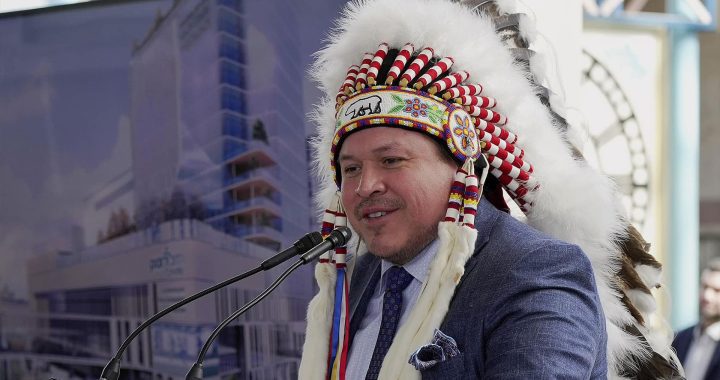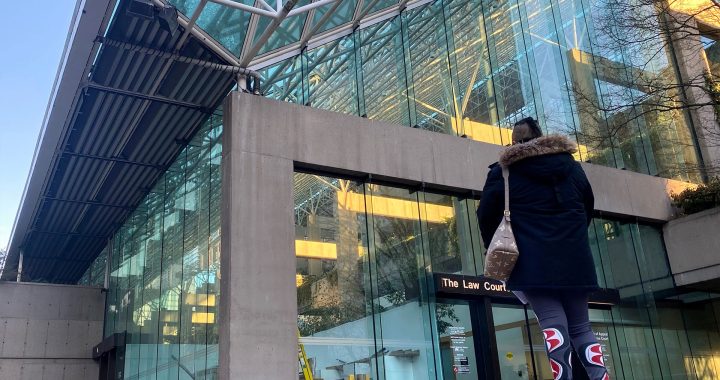(Kiviaq, boxer, lawyer, advocate dies at age 80)
The Canadian Press
EDMONTON – An Inuit pioneer who blazed trails from the boxing ring to the legal bar to the birth certificate has died.
Kiviaq, who successfully fought to use the name his mother gave him, died April 24 at the age of 80.
“He died with family around,” said his lifelong friend and fellow broadcaster Bob Coe.
Kiviaq was born in 1936 in a hunting camp somewhere near what is now Chesterfield Inlet, Nunavut.
Shortly after, he and his sister were taken to Alberta by their mother’s new white husband. Under the name David Ward, Kiviaq was raised by his mother and stepfather in Edmonton.
”We were supposed to pretend we were white,” he recalled in a 2006 interview.
It didn’t work. He still remembered being bullied and hearing his classmates call him a ”dirty, stinking, flea-bitten Eskimo.”
After getting jumped one too many times walking home from the movies, Kiviaq started hanging out at a boxing club. It was the beginning of his love of sports.
He won provincial boxing and Golden Gloves championships and was victorious 102 of 108 times as a prizefighter. In 1955, he briefly played halfback with Edmonton’s Canadian Football League team _ the only Inuk to have ever been an Eskimo.
He moved on to serve on Edmonton’s city council in the late 1960s and made a failed run for the mayor’s chair in 1976.
For a few years, Kiviaq ran an open-line radio show, where his interview subjects included Muhammad Ali. Then he entered law school and in 1983 became the first Inuk to be called to the Canadian bar.
His most memorable case may have been his own. In 2001, he won the right to use his single Inuktitut name in legal documents.
”I feel so different you can hardly believe it,” Kiviaq said at the time.
”I am me. I am not a figment of somebody’s imagination who said, ‘We’ll give him a white name. We’ll make him a white person.”’
The question of names has added resonance for Inuit. Until the late 1960s, the federal government issued each of them a metal disc with a number on it, which is how they were referred to in government documents.
Kiviaq also fought for recognition of other Inuit.
He drew attention to the efforts of David Kootook, a 14-year-old Inuit boy who helped save the life of pilot Marten Hartwell in a 1972 Arctic plane crash. Kootook didn’t survive, but was posthumously awarded the Meritorious Service Cross in 1994.
In 2004, Kiviaq filed a lawsuit arguing that Inuit should have the same status and benefits as aboriginals covered by the Indian Act. A $150,000 claim for his law school expenses formed the heart of his challenge, although the case was never settled.
That lawsuit inspired Inuit filmmaker Zach Kunuk, who in 2006 released a documentary “Kiviaq vs Canada.”
Kunuk said at the time that Kiviaq’s willingness to put on the gloves was an inspiration to him.
“He is an Inuk saying ‘no’ to the government,” Kunuk said. ”No Inuk would ever do that. It’s just not the way we are.
”I thought, ‘Maybe he’s on to something.”’
As cancer gradually wore him down, Kiviaq spent his retirement years riding horses, pedalling bikes and walking his dog.
“He was a good rider,” remembered Coe, who used to ride with Kiviaq along the North Saskatchewan River.
“He had the whole gear _ chaps and a beat-up old cowboy hat. He looked the role.”
Playing a role, though, was not what Kiviaq was about.
“I know what I am now,” he said after winning back his name. ”And I am what I am.”
— the Canadian Press










